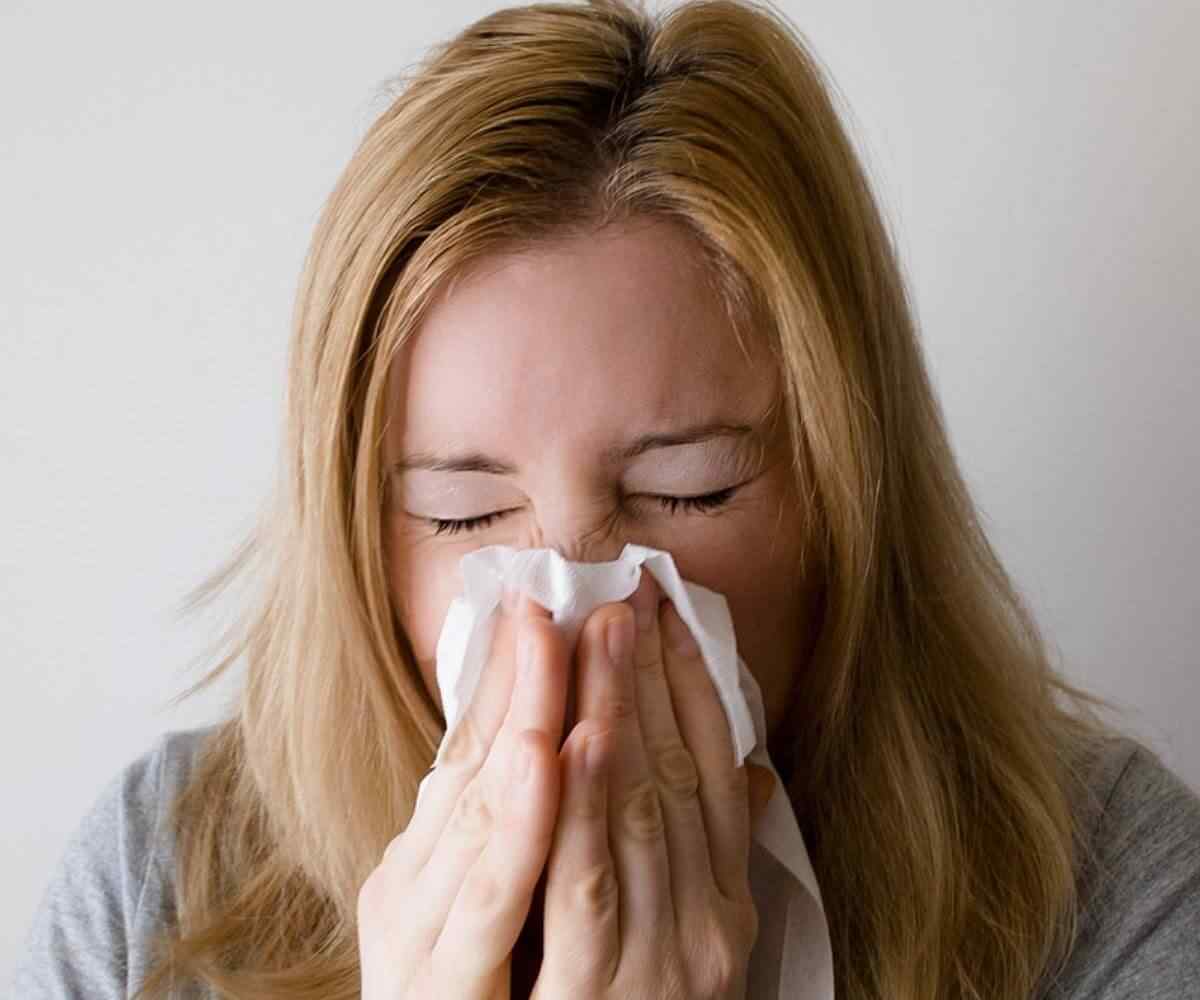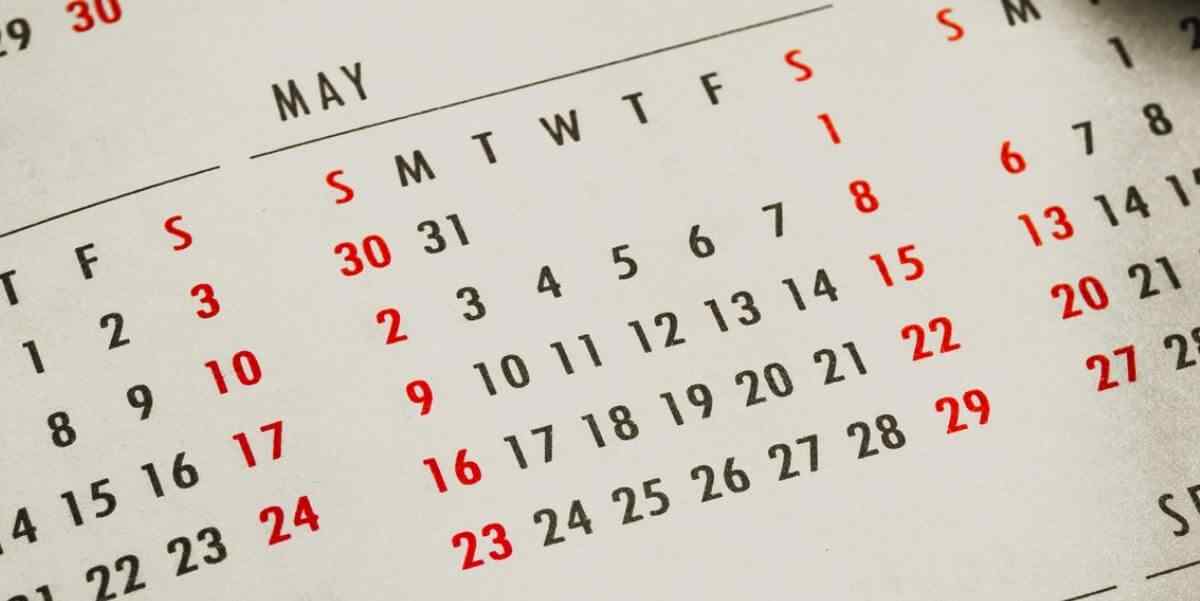
The complete guide to the Keto or carb flu: what it is, how long it lasts, symptoms, causes, and six effective remedies to cure and get rid of it.
A common side effect of the keto diet is keto flu. This is not flu that you might typically get, but rather a set of symptoms that can be nearly as bad as it. Let's take a look at what keto flu is, how to avoid it, and ways to cure it if it does strike.
The keto flu is a term for the stomach pain, nausea, and general flu-like symptoms that people experience when they first switch to a ketogenic diet. This happens because the body uses glucose as its primary fuel source instead of the fat stores built up during weeks or months of intense carb restriction. The keto flu experience is often characterized by exhaustion, dizziness, headaches, and cravings for high-calorie foods.
Looking for a keto flu cure? There are many things that you can do to avoid keto flu and what is more, there are also some things that you can do to treat the symptoms. The following article will discuss these things and more, so continue reading if you want to know how to avoid keto flu or if you already have it and are looking for a keto flu remedy.
The Keto diet as I have explained in more detail here, is not a high-carb diet nor a moderate low-carb diet. It is by design a very low-carb diet and lifestyle where dieters reduce carbohydrate intake to between 5 and 10% (which is a maximum of 50 grams of carbs per day) and replace carbs with fat. This metabolic flexibility starts a process called ketosis which is where, starved of glucose that is provided by carbohydrates, you use fat for fuel.
A diet that burns fat can massively increase weight loss and increase overall health levels.
Keto can lead to several short-term side effects if not followed properly.
Confusion, anxiety, and/or irritability
Constipation
Extreme and excessive thirst
Fatigue
Frequent urination (a side effect of extreme thirst)
High heart rate (Tachycardia)
Hunger
Light-headedness and shakiness
Sweating and chills
The most common side effect is the Keto flu.
In the early stages of a keto diet and as a temporary side effect of the body using ketones for energy instead of stored glucose, many people report flu-like symptoms. These effects are nothing to worry about, are typically short lived, and go away once your body adjusts to the new diet. It is worth noting that Keto flu is not actually like influenza and it is not at all contagious, it gets its name due to sharing some of the same symptoms.
Even though symptoms are short lived they are not fun to experience. The good news is that there are things that you can do to feel better and overcome symptoms.

Yes!
Any diet that is low-carb can elicit Keto flu symptoms.
Despite the name it is not actually unique to the ketogenic diet and can occur in other low-carb diets like Atkins.
These flu-like symptoms are caused because your body has previously exclusively used carbohydrate as fuel. When you stop eating carbohydrates, your body goes into shock because it does not know how to use fat as fuel.
The symptoms will go away once your body adjusts to using fat instead of carbs for energy.
Keto flu is not as significant as it sounds, and typically happens immediately after starting a ketogenic diet. Your body chemistry will adjust, and you will be physically okay in no time.
You might be wondering if everyone gets Keto flu. The answer to that is it largely depends on what body type you have.
If your body is strong enough so it can easily adapt to a new diet-sometimes called metabolic adaption, you may not get Keto flu. However, if your body struggles to process a fasting or changed diet, you are more likely to develop Keto flu.
In the early stages your body needs to adapt to the change in diet of using fat rather than carbs for energy.
As you can imagine, our bodies are used to converting carbs into glycogen as for the average person this is how we have lived for the majority of our lives so changing this can have some effects on your body. Consequently, a body deprived of carbs will go through carb or sugar withdrawal. This is the primary cause of these flu-like symptoms.
Common side effects from keto diet that people new to the diet experience can include feeling fatigued or tired, stomach cramps, dizziness, and nausea. Irritability is also quite common due to craving carbs/sugar.
Headaches are also very common, though generally mild. I have written an article all about keto headaches which you can read here.
The Keto flu is a common occurrence during the first few days of starting a ketogenic diet. This typically only lasts for a day or two. It is rare for it to last longer than this, though in extreme cases it could last a few weeks.
How long Keto flu is different for individuals; some people might never experience any symptoms. It depends on how easy your body finds switching from glucose as your main fuel source to ketones.
If symptoms last longer than a week you might be eating too many carbs and not enough healthy fatty foods. You might need to evaluate what you are eating and reduce your carb intake further.

Below is an alphabetical list of common symptoms reported by people who have just begun the Ketogenic diet. It is worth noting that while these are commonly-reported symptoms it is rare for one person to experience all of them.
Keto Flu Symptom 1: Dizziness
Keto Flu Symptom 2: Fatigue or tiredness
Keto Flu Symptom 3: Headache
Keto Flu Symptom 4: Impaired coordination
Keto Flu Symptom 5: Insomnia - hard time sleeping
Keto Flu Symptom 7: Lack of motivation/enthusiasm - feeling listless
Keto Flu Symptom 8: Low energy levels
Keto Flu Symptom 9: Muscle cramps, spasms, weakness or soreness
Keto Flu Symptom 10: Nausea - feeling sick or unwell
Keto Flu Symptom 11: Poor concentration - brain fog
Keto Flu Symptom 12: Restlessness or irritability
Keto Flu Symptom 13: Sensitivity to heat - feeling feverish
Keto Flu Symptom 14: Stomach cramps - pain, bloating, constipation or diarrhoea
Keto Flu Symptom 15: Sugar cravings
These symptoms don’t usually last longer than a week, but many people to give up on the diet due to how these flu-like symptoms makes them feel, which is a shame as the ketogenic diet is amazing for health and weight loss.
Often people feel like there is nothing that can be done about Keto flu, but this is a mistake. There are many things that can be done to reduce symptoms.
I will discuss some of the things that can be done to alleviate some of these things as I go over the key causes.

If you are currently experiencing some of these symptoms you might be wondering if there is a Keto flu cure. There may not be a cure for Keto flu, but it is easy to treat with changes that you can make.
Here are some tips about how to treat Keto flu that can help ease some of these short-lived symptoms.
When starting the induction phase of the ketogenic diet it is tempting to cut carbs as quickly as possible, but this is likely to make Keto flu symptoms worse. It is therefore best to start gradually to get your body accustomed to ketosis.
The initial change from carbs to ketones can stress your body. so start by gradually decreasing your carb consumption over a few weeks prior to properly starting the diet; you won't enter ketosis so you won't get the benefits of ketosis but you should prevent some of the negative affects of Keto flu.
Weening yourself off sugar for a few days is also a good start. Once you are used to reduced sugar it is time to start cutting starchy foods like potatoes and rice. At the same time you should also be increasing your fat consumption to help ease your transition into ketosis.
A typical western diet is primarily based on using carbs/glucose for fuel so getting your body ready for the change from a carb-rich to a carb-restricted diet should make the transition to the ketogenic diet much easier on your body.
If you are already experiencing symptoms of Keto flu one way to reduce these is to eat some carbs, this will stop you from being in ketosis but if it helps you to eventually stay on the ketogenic diet for longer then it might be worth a day or two over your daily carb limit if this stops you from giving up on the diet entirely.
There is strong evidence that eating nutrient-rich dense foods is also beneficial, you can read more about what foods you can eat in this article.

Another common mistake that people make is not eating enough food. The ketogenic diet is about restricting carbs not restricting foods in general.
Eating enough healthy fats and enough calories will help reduce carb/sugar-cravings as well as giving you enough energy to combat tiredness.
For beginners I recommend The Custom Keto Diet as following this diet plan will help remove the guesswork from the ketogenic diet and help you get healthier and lose weight faster.

An imbalance of essential electrolytes is the main cause of the Keto flu.
Electrolytes are minerals that help regulate the amount of water in your body and are necessary for critical body functions such as balancing pH levels, moving nutrients into cells and removing waste from cells. Electrolytes are also critical for ensuring your nerves, muscles, and brain work properly.
You can probably see why an imbalance in electrolytes can have such an effect on your body, but why does Keto cause an electrolyte imbalances?
Cutting carbs affects how your body produces insulin by significantly decreasing how much insulin is in your body. This is why the ketogenic diet is often linked with diabetes and obesity.
Reduced levels of insulin causes your kidneys to expel excess water and sodium/salt which in turn makes your kidneys increase production and release of calcium, magnesium, and potassium. Or to put it simply as your insulin levels decrease with ketosis, the kidneys naturally remove sodium from the body.
Whereas previously there was a balance being maintained by carbs/glucose, by cutting carbs this equilibrium is shaken. This imbalance is why you get Keto flu.
Insulin is also part of the process that transports glucose to the brain, therefore before the brain starts to use ketones instead of glucose for energy, which usually takes a few days, it will have less fuel. After a few days your blood sugar levels return to normal levels: this does not harm your brain in anyway.
The best way to increase electrolytes is to eat more foods high in sodium/salt, magnesium, and potassium. You will find these minerals in avocados, almonds, bone broth, seaweed, seeds, mushrooms, tomatoes, and leafy greens like spinach and kale.
Also don't be afraid of adding extra salt, lots of salt is required on Keto as you are restricting carbs which are a good source of salt. It is recommended to consume around 2-3 teaspoons of salt a day when on Keto; it is best to add salt with every meal to ensure you are getting enough sodium.
When on Keto you need to remove any concerns you have about sodium/salt being bad for you, your kidneys are removing a lot of salt when on Keto so you need to replenish that one way or another. Remember, low sodium is the primary reason for Keto flu! Bacon is naturally salted as are salted nuts, both excellent for helping you maintain your sodium levels.
The Custom Keto Diet will also help with eating the right foods to keep you happy and healthy during Keto.

When following the Keto diet you need to drink a lot of water than you did previously to avoid the risk of dehydration. This is due to again removing carbs from your diet. When eating carbs your body stores excess water along with glucose in your liver, without carbs your body increases water loss, which makes it easier for a Keto dieter to get dehydrated.
Drinking more water is also one way for how to get rid of Keto headache flu symptoms. But how much water should you be drinking on Keto?
Drinking at least 16 cups (about 4.5 litres) of water is recommended to help get over keto flu. In addition, in the early stages of ketosis your body burns rapidly through your stores of water; it is usually this water burning that produces the initial amazing weight loss on Keto.
It is also important to note that drinking more water will make you go to the toilet more, which makes it even more important to replenish electrolytes as if you do not this will just make Keto flu symptoms worse as the increase water intake will just make your kidneys expel more electrolytes.
Sports drinks often contain electrolytes, however you should avoid drinking these on Keto as they are usually high in glucose so drinking them will almost certainly exceed your carb intake for the day. So make sure to drink plenty of water on Keto and replenish electrolytes. These two things should be seen as two sides of the same coin.
You could also try Dr. Berg's Electrolyte Formula; this dietary supplement helps replenish electrolytes into your body; as it is potassium-rich and 100% Keto-friendly as it does not contain carbs or sugars unlike sports drinks. As it is an exogenous electrolyte powder that needs to be diluted into water, not only does it help balance electrolytes it also helps increase your water consumption.

Making the transition from a carb-rich to a carb-restricted diet can cause you to crave foods like sugars and carbs. If your diet has comprised of foods like bread, pizza, and potatoes it is normal to crave them if you abruptly stop eating them.
Eating plenty of fat, which is the primary source of fuel on Keto, should help alleviate these cravings as not feeling hungry should stop you from excessively thinking about food and more importantly stop you from thinking about foods that you used to enjoy but now can no longer eat.
This tip is related to tip 1: starting Keto gradually as slowly transitioning to Keto can help you get used to eating fewer carbs while increasing fat and protein in your diet. This can also help decrease Keto flu symptoms.

During the first week or two of Keto it is best to avoid very strenuous intense exercise; this might interfere with your existing exercise regimen but in the long term the health and weight loss benefits will be worth it.
Exercising strenuously when you start Keto may lead to stomach cramps and fatigue. This doesn't mean you should stay in bed, a good idea when new to Keto is to go for a walk rather than running or cycling.
When you wake up, put some water in a bottle, have a pinch of salt, and go for a brisk walk for an hour; a useful tip to know that you are not exercising too strenuously is to walk at a pace that allows you to talk without getting out of breath. This will help you lose weight and get healthier and feel better about yourself.
If walking makes your Keto flu symptoms worse you might be dehydrated, low in electrolytes, or not eating enough healthy fats.
Not eating enough calories and fat can mimic Keto flu symptoms, so make sure you are not eating fewer carbs and eating less fat. Fat is the primary source of fuel on Keto so you need to eat a lot of healthy fats to give your body the nutrients it needs.
Swimming or yoga are also good low intensity exercises when starting Keto to help with Keto flu symptoms.
Once your body is used to Keto you should be able to resume your normal exercise regimen and burn off extra calories.

Getting plenty of sleep is important for mind and body; sleep regenerates your energy levels. Getting at least seven hours of sleep is especially important for people on Keto.
When starting on Keto your body may need more sleep during the transition from carb to no-carbs.
A lack of sleep raises bloodstream levels of cortisol which will only make Keto flu symptoms worse.
Sleep can also help with reducing fatigue and low energy levels by helping you feel fresh and well rested.
Napping can help reduce some of the Keto flu effects. Once you are in ketosis you can go back to your normal sleep routine.
Tips to get more sleep include reduce caffeine (if you must drink caffeinated drinks restrict them to the morning), remove artificial lights from your bedroom routine (don't use mobile/cell phones, computers, or televisions when lying in bed), and taking a bath can help you relax and get ready for sleep.

There are a few other side effects to the ketogenic diet, and these are also often short lived.
You might notice you are more itchy which might produce something called the Keto rash. You might notice some bumps and redness on your skin, typically around armpits, back, chest, neck, shoulders, and stomach. Like Keto flu, Keto rash affects different people in different ways. If it lasts longer than a week you might need to consult your physician as you may have an allergen to one of the new foods you are eating.
Constipation is also quite common when starting a new diet as your body gets used to the new foods you are eating. This is not unique to Keto but it might be more prevalent as you eat less fibre. An easy remedy is to eat more fibre, though obviously not sources of fibre that contain carbs; avocado, nuts and seeds, and leafy greens like spinach are a great source of keto-friendly fibre.
Headaches are very common when you first start Keto, though they are generally mild and similar to normal headaches that we have all had in the past.
I have written an article all about keto headaches which goes into a lot more detail about them.
In rare cases, after a few days of Keto flu symptoms you may need to see a physician. This is usually if the keto flu symptoms last longer than 2 weeks and include fever, rash, and other more painful or debilitating symptoms like vomiting.
These symptoms occur in extreme cases, and these reactions are very rare which is why it is important for you to seek medical attention from a doctor if these happen for an extended period of time.
The Keto flu can make you feel bad about yourself and the Keto diet. Including a few more carbs into your diet for a day or two until you start to improve, feeling better and more able to carry on with the diet is one Keto flu remedy.
Other Keto flu remedies are to keep yourself well hydrated and to cut down any strenuous exercising for a few days.
The Custom Keto Diet can help you understand the diet, help you keep in ketosis, and guides you along the Keto lifestyle.
Dr. Berg's Electrolyte Formula; can help replenish your electrolytes during the initial stages of Keto.
Once your body has adjusted to using fat for fuel instead of carbohydrate you should start to function normally again.
Keto is an amazing diet that can increase your health and well-being, so don’t let Keto flu, or the idea of keto flu if you haven't tried the diet yet, put you off.
It is important to remember that Keto flu symptoms are short lived, affect individual people differently and are not guaranteed to affect you, so Keto flu should not put you off Keto completely.
You should also subscribe to my YouTube channel, new videos are uploaded every Tuesday.
For some simple keto recipes, click the image below or this link for a free ebook and keto tips, and some evidence about how keto can help your health.
